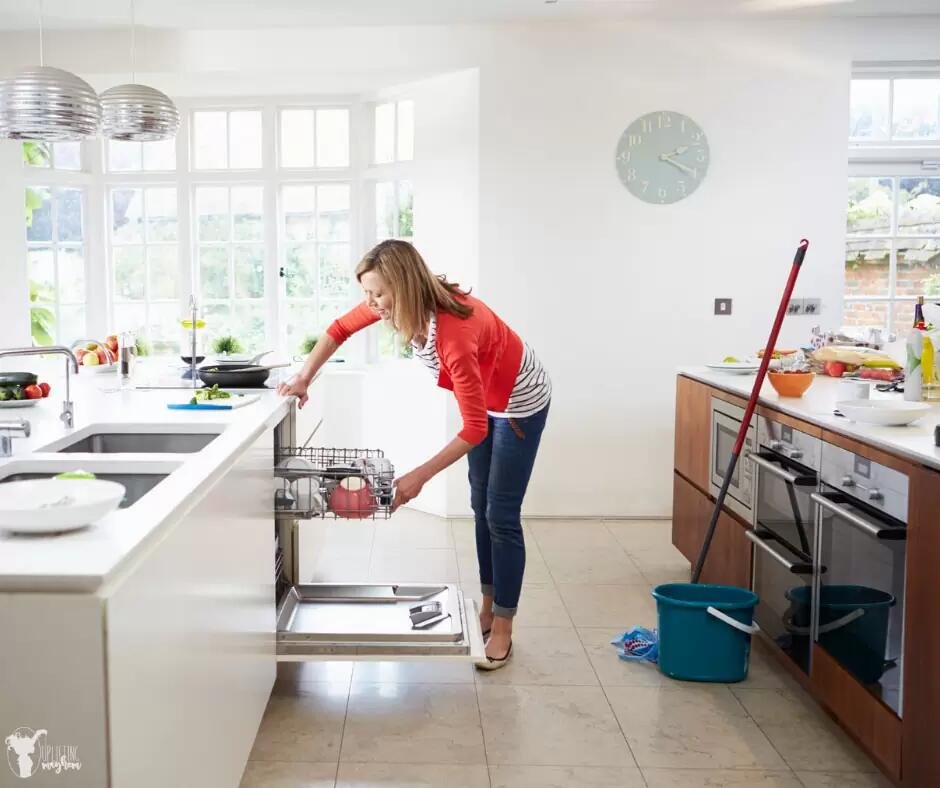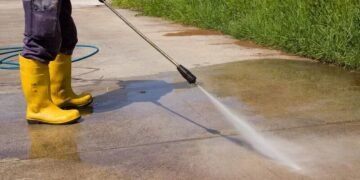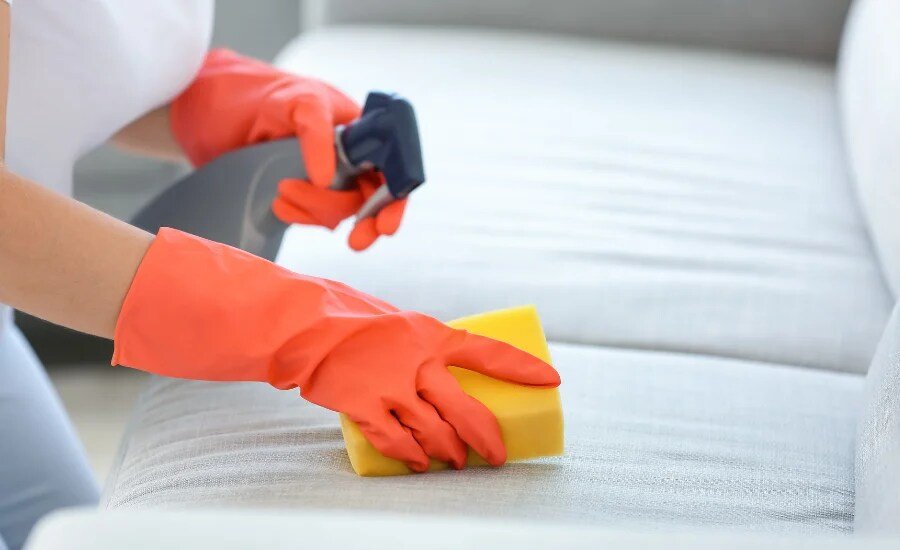Maintaining cleanliness in your home is crucial for creating a healthy, comfortable, and inviting living environment. It involves consistent efforts to keep your surroundings organized, free from dirt, and well-maintained.
In this guide, you’ll discover actionable tips and methods for maintaining a spotless home, from creating effective cleaning schedules to understanding its importance and the challenges you might face:
Importance of Cleanliness
Health and Hygiene
A clean home reduces the risk of illness by minimizing the presence of germs, bacteria, and allergens. Regular cleaning, especially in high-touch areas, can prevent the spread of infections.
By consistently practicing good cleaning habits, you create an environment that is less appealing to pests. Many pests are carriers of diseases and pathogens that can be transmitted to humans. For example, mosquitoes can carry diseases like malaria, dengue fever, and West Nile virus, while rodents can transmit diseases like Hantavirus and Leptospirosis. Cockroaches are known to spread allergens that can trigger asthma and other respiratory issues.
Mental Well-being
Clutter and disorganization can contribute to feelings of stress and overwhelm. A clean and organized space creates a sense of order and control, leading to reduced stress levels. When your surroundings are tidy, you’re less likely to feel mentally cluttered as well.
Did you know? Even though bed bugs may carry disease, they do not transmit diseases to humans, but they may cause mental issues like PTSD and delusional parasitosis. This will definitely not lead to mental well-being.
Productivity
A clean environment fosters productivity and focus. When your surroundings are organized, you’re likely to feel more motivated and efficient in your tasks.
A dusty environment might cause allergies and bring down your mental productivity.
Longevity of Belongings
Regular cleaning and maintenance can extend the lifespan of your furniture, appliances, and other belongings. Dust and dirt accumulation can cause wear and tear over time.
For instance, in kitchens mold formation will depreciate the life of kitchen furniture. Also, scale formations on taps will reduce its lifespan and cause leakages.
Spills of liquids, food, and other substances can stain the carpet permanently if not cleaned promptly and properly. Stains can also attract more dirt and become harder to remove over time
Pleasant Aesthetics
A clean home is visually appealing by nature. When surfaces are free from dust, dirt, and clutter, the space appears more inviting and attractive. Cleanliness highlights the beauty of furniture, decor, and architectural features.
What would appeal to you the most? A clear view of a sunny day from your living room or a stained view from the window?
Challenges of Maintaining Cleanliness
Time Constraints
Busy schedules can make it challenging to find time for thorough cleaning. Balancing work, family commitments, and social activities can sometimes leave little room for cleaning tasks.
Procrastination
Postponing cleaning tasks can lead to a buildup of dirt and clutter, making the eventual cleaning process more overwhelming.
Lack of Motivation
Cleaning may not be everyone’s favorite activity. Finding the motivation to clean regularly can be difficult, especially when tasks seem repetitive or mundane.
Clutter Management
Keeping clutter at bay requires consistent effort. It’s easy for items to accumulate and create a disorganized space.
Cleaning Knowledge & equipment: Some individuals may not have learned proper cleaning techniques or may not be aware of the most effective cleaning products for different surfaces.
When it comes to the kitchen, Stubborn stains can be quite a challenge. Many households may lack the knowledge of how to properly clean sofas. Hard water stains in the bathroom can be very hard to clean.
Consider seeking professionals in these cases as they use advanced cleaning equipment like UV disinfection treatment and HEPA vacuum filters for Sofas and mattresses. Hand scrubbing machine to remove hard water stains in bathrooms. etc.
Family Dynamics
In households with multiple members, differing cleanliness preferences and habits can lead to conflicts.
People have varying approaches to cleaning – some prefer a thorough, deep clean, while others are content with quick tidying up. These differences can lead to clashes and hinder effective teamwork
Creating a Cleaning Schedule: Weekly and Monthly Routines
The cornerstone of a clean home is an effective cleaning schedule.
Weekly Cleaning Routines
Assign specific days for different tasks. For example, you can focus on kitchen cleaning on Mondays and bathroom sanitizing on Wednesdays. Consistency is key to building an effective routine.
Monthly Deep Cleans
In addition to your weekly tasks, set aside time for monthly deep-cleaning sessions to tackle areas like ovens, behind appliances, and under furniture.
Half Yearly or Quarterly Cleans
Deep clean your furniture, and decor items. Over time, dirt, grime, and debris accumulate in hard-to-reach places. Deep cleaning ensures that even these concealed areas are thoroughly cleaned, preventing buildup.
Regular cleaning and maintenance can prevent the need for costly repairs or replacements. By addressing issues early on, you can avoid the expense of fixing or replacing damaged household things.
Seeking professional help can be a good choice if deep cleaning is overwhelming for you. They possess the knowledge and experience to use appropriate techniques and products and save you time and effort. Also, some things like pest control, marble floor restoration or removing hard stains on sofa etc. need professional interventions
Follow these steps to achieve a clean and organized home
Create a Cleaning Routine
Establish a regular house cleaning schedule to prevent dirt and clutter from accumulating. Divide tasks into daily, weekly, and monthly routines, and also among your family members. For instance, daily tasks might include making the bed, washing dishes, and tidying up. Weekly tasks could involve vacuuming, dusting, and changing bed linens. Monthly tasks might encompass cleaning windows, deep-cleaning appliances, and decluttering.
Declutter
Remove items you no longer need or use. Sort through belongings and donate, recycle, or dispose of items that are taking up space. Clutter obstructs access to surfaces and areas that require cleaning.
Dust, dirt, and grime can accumulate in hidden corners or under piles of items, making it challenging to reach and clean effectively. A clutter-free environment is easier to clean and promotes a sense of calm.
Designate Spaces
Assign a specific place for everything in your home. This reduces clutter and makes it easier to locate items when needed. Use storage solutions such as shelves, cabinets, and storage bins to keep things organized.
Minimize Paper Clutter
Go digital whenever possible to reduce the accumulation of paper clutter. Opt for electronic bills, statements, and documents. Use apps and tools to manage to-do lists, shopping lists, and reminders digitally.
Clean as You Go
Create a habit of performing quick cleanings. This prevents small messes from escalating into bigger cleaning tasks. For instance, wipe down kitchen countertops and taps after cooking, make your bed as soon as you wake up, and hang up clothes instead of leaving them on chairs or floors.
Kitchen and Dining Areas
These spaces are prone to messes. Wipe down surfaces, clean appliances, and sweep or vacuum regularly. Wash dishes promptly and empty the trash regularly to prevent odors.
Wash kitchen sinks daily. Make sure there is no standing water in and around as Pests are attracted to moisture, so keeping the sink dry can deter them.
Bathroom Cleaning
Regularly clean the toilet, sink, shower, and bathtub. Keep cleaning supplies handy so you can quickly address spills or messes. Give surfaces like the sink, countertops, and faucets a quick wipe daily to remove toothpaste, water splashes, and other debris after the use. Use the bathroom exhaust fan during and after showers to reduce moisture and prevent mold growth. Keep the bathroom free of unnecessary items or clutter that can make cleaning difficult.
Bedroom
Make the bed daily to instantly make the room feel neater. Regularly launder bed linens and vacuum the floors. Keep surfaces clutter-free by returning items to their designated places.
If you have traveled, please check for bed bugs in your travel bags and clothing before entering your room. They can easily latch onto clothing, luggage, bags, and other personal items
Living Areas Cleaning
Vacuum sofas, carpets and rugs regularly, and dust surfaces to prevent allergens from accumulating. Fluff cushions and pillows, and keep entertainment areas organized.
Clean your living areas window for fresh air to let in. Depending on your flooring type, vacuum or sweep the living area. Pay special attention to corners and edges. Use attachments to clean under furniture and between cushions. Dust all surfaces, including furniture, shelves, picture frames, and decorative items. Use a microfiber cloth or duster to capture dust effectively
If you have marble & granite flooring, avoid using heavy acidic detergents as they can severely damage your marble floors.
Laundry Routine
Establish a routine for doing laundry. Sort clothes, wash, dry, and fold or hang them promptly to prevent a pile-up of dirty laundry. Include bedding and linens in your laundry routine. Wash bed sheets, pillowcases, towels, and other linens at regular intervals to maintain freshness and cleanliness.
Regular Deep Cleaning
It is recommended that to deep clean your home every 2 months to spotless space
Deep cleaning of a home is crucial for health, hygiene, and aesthetics. It removes contaminants, allergens, and pests, improving air quality, extending furniture life, and preventing mold. Deep cleaning maintains property value, ensuring a clean, safe, and inviting living environment.
Family Participation
Involve all members of the household in cleaning tasks. Assign age-appropriate chores to children and encourage everyone to contribute to maintaining the cleanliness of the home.
Divide cleaning chores between your family members so that one person does not feel exhausted and the habit is not lost.
Involve children in cleaning routines as it teaches them valuable life skills, such as tidiness, organization, and responsibility. It’s an opportunity for parents to instill good habits and prepare children for independent living
Proper Waste Disposal
Dispose of garbage and recyclables properly. Make sure you have designated bins for different types of waste. The longer waste sits, the more attractive it becomes to pests. Improper waste disposal creates ideal conditions for pests to breed and multiply. This can result in larger pest populations that are difficult to control, requiring more extensive and costly pest management measures. Pest droppings, urine, and sheddings can trigger allergies and exacerbate respiratory issues like asthma, particularly in vulnerable individuals
Surface Cleaning and Disinfecting
Regularly wipe down high-touch surfaces like doorknobs, remote controls, and kitchen countertops using quality disinfecting sprays or wipes. Start by using a microfiber cloth or disposable wipe to remove dust, dirt, and debris from the surface. Wipe down the area to ensure it’s clean before applying disinfectant
Ventilation
Clean your windows regularly for dust and keep them open to allow fresh air to circulate, which can help eliminate odors and improve indoor air quality.
Maintenance
Address repairs and maintenance issues promptly. Fixing leaks, replacing broken items, and addressing other issues prevents them from worsening and causing more significant problems.
Invest in Quality Products
Quality cleaning products not only make the task easier but also ensure that all germs and bacteria are effectively killed. Always read product labels for proper usage. Use Microfiber cloths as they are excellent for capturing dust and bacteria, making them a must-have for effective cleaning
Final Words
By understanding the importance of cleanliness, acknowledging the challenges, and implementing practical strategies, you can create a clean and inviting home that promotes well-being and a positive atmosphere for you and your family.
Recommended Posts:















